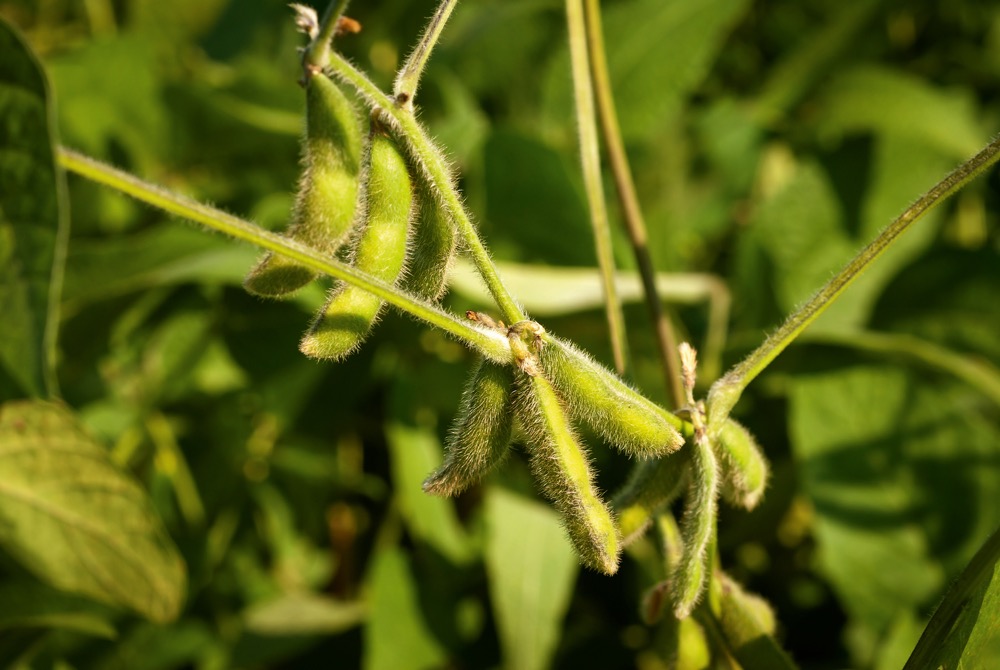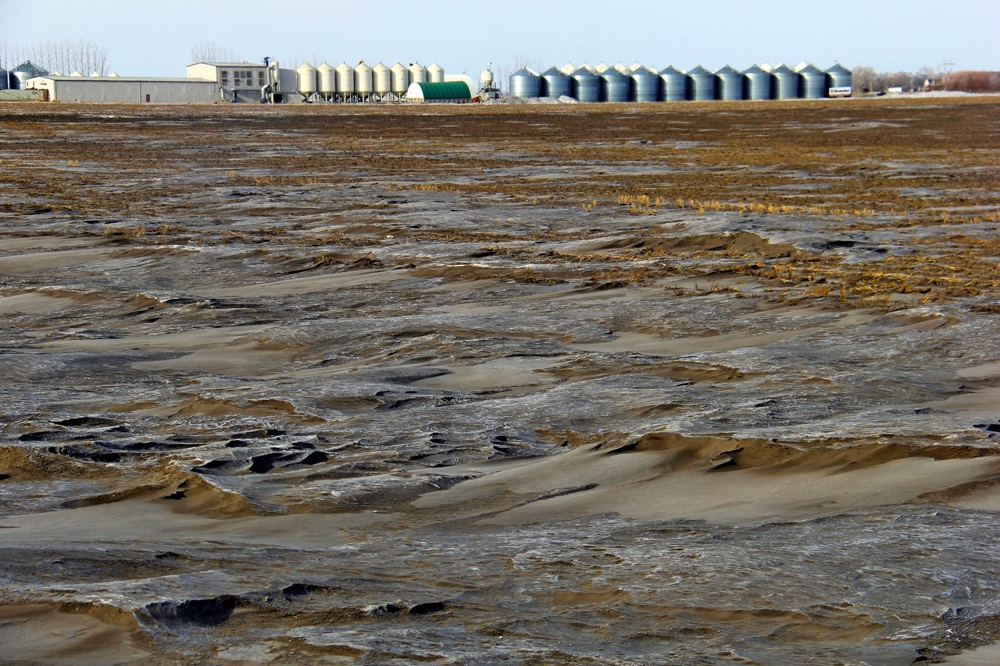Soybeans continue to amaze. While 40 and 50 years ago they were relegated to the deep southwest of Ontario, now they are grown increasingly across Canada. When you drive from Windsor, Ont., toward Quebec City, soybean fields dominate the landscape, while acreage climbs in the Prairie provinces as well.
Simply put, soybeans are challenging the production limits imposed by Canada’s climate and topography. The crop’s future seems very bright.
The acreage statistics in Canada are particularly striking in Western Canada. For instance, according to Statistics Canada 1.86 million acres of soybeans were grown in Manitoba and Saskatchewan in 2016. This breaks down to 1.625 million acres in Manitoba and 235,000 acres in Saskatchewan.
Read Also

Soybean cyst nematode survey a valued benchmark opportunity
The word nematode is often linked to soybean cyst nematode (SCN), and with good reason. In North America, SCN accounts…
This means soybean acreage in Manitoba has more than doubled over the last four years, while Statistics Canada just started measuring soybean acres in Saskatchewan in 2013.
Incredible as it would have seemed just a few years ago, we are now looking at the very real likelihood that soybean production in Western Canada is on a path to outstripping production in the east.
However, in 2016 we are still a long way from that.
In Ontario, 2016 soybean production area is set at 2.715 million acres, with Quebec production area set at 803,100 acres. These production acreage figures are actually down from 2014 levels and will likely remain static for the foreseeable future. There is limited acreage to expand in Ontario and Quebec, and usually there is a trade-off with corn acres every year. However, you never know where new technology will take you. Soybean productivity is always an ongoing challenge.
Weather in 2016 has been disappointing in the East, with an extended drought in Ontario. Statistics Canada is predicting a yield of 41.6 bushels per acre in Ontario, 45.4 bushels per acre in Quebec and 35 bushels per acre in Manitoba. These yield estimates are all down from 2015. However, these estimates are from the July report on principal crops. August and September rains may have improved that picture.
Production is one thing, and marketing the crop is another. A year ago nearby soybean futures were approximately $8.70 a bushel. However, as of mid-September this year, nearby soybean futures were trading at about $9.80 a bushel. This is similar to September 2014 when the nearby soybean futures were $9.85 a bushel.
Admittedly, this is a far cry from the record soybean futures price high of $17.89 hit in 2012. Those prices have been cut over the last few years as farmers around the world have ramped up soybean production.
As the 2016 harvest continues, there is much for Canadian soybean growers to consider. How will prices move over the next six months? Will geopolitical events around the world affect the soybean market in a positive or a negative way? How will the Canadian dollar continue to impact the pricing of soybeans? How will the South American soybean production economy influence the outlook for Canadian producers this winter?
For Canadian soybean farmers, futures trading at the Chicago Mercantile Exchange forms the foundation for the prices received in Canada. The nearby futures price plus a basis evaluation converted into Canadian dollars gives us our Canadian cash price at various locations throughout Canada. These futures prices are traded at Chicago and are affected largely by the big soybean production areas in the U.S. and in South America.
Currently, the very large crop grown this year in the U.S. has affected soybean futures. According to the USDA in its August report, American farmers are expected to produce 48.9 bushels per acre of soybeans on 83 million acres in 2016. This is record production (4.060 million bushels, or 149.2 MMT) and it is weighing on soybean futures market prices.
This production number may be changed in successive USDA reports going into the January 2017 final report, but there is little question that we are dealing with a very large American soybean crop.
When considering soybean prices, one should always think about the geographic duality of the soybean market. For instance, South America soybean planting begins in October, with harvest generally taking place March to May. Of course, it is almost the opposite in the northern hemisphere. This means that there two cycles annually when major production areas are at risk, and prices respond accordingly.
For Canadian soybean producers this is always relevant. Keeping an eye on developments in these regions is always very important.
Last year’s 2015-16 South American soybean production was less than expected, but still very large. Brazil produced 96.5 MMT of soybeans while Argentina produced another 56.5 MMT. The USDA has projected for the 2016-17 season Brazilian production at 103 MMT with Argentina coming in at 57 MMT. This will add to supply concerns.
Supply has been onerous, but it has been tempered to a large extent by seemingly insatiable demand growth. This is part of the reason why, even with growing production, soybean prices remain higher than last year.
World demand last year was 300.90 MMT of soybeans; this year it is estimated at 317.20 MMT, and next year’s demand is projected at 329.28 MMT, according to USDA numbers.
Simply put, demand is growing for soybeans and production has been challenged to keep pace. China remains the world’s largest importer of soybeans, at 95.5 MMT this year, compared to 87.20 MMT last year, and a projected 101.20 MMT next year.
This means that despite current soft futures prices, the market remains dynamic; any production blip around the world this winter will likely send prices higher.
The Canadian dollar remains a distinct advantage for Canadian soybean farmers. In many ways it has been the whole story for grain prices in Canada over the last two years. With the loonie hovering around the 76 to 77 U.S. cents level in early September, basis levels were in the plus $2.40 range with cash prices at $12.20 bushel. This is based on a soybean futures value of $9.80 a bushel.
If the loonie were at par with the U.S. dollar, cash prices in Ontario would be substantially less than the futures prices. As the loonie moves up or down, cash prices to Canadian producers are greatly affected. The soybean basis is a direct conversion of foreign exchange to the end-users.
In Ontario and Quebec, soybeans are exported as well as crushed at domestic plants. In P.E.I., the soybean basis is calculated based on the distance to the processor in Quebec or the cost to ship through Halifax. In Manitoba, soybeans are either exported offshore or sent south to U.S. crushers. There is always a significant non-GMO market in Ontario and Quebec that ebbs and flows each year with appropriate premiums. These soybeans go to end-users in Asia for human consumption.
Of course, farmers want to know whether soybean prices will be $12, $13, or even $14 in the near future, or whether the market will slide instead, hitting $11 followed by $10, $9 and $8 in the months to come.
Nobody knows for sure, but the Canadian dollar will remain a key factor for soybean prices this fall. The big U.S. crop being harvested will surely continue to weigh on futures prices.
South American planting starting in October will also be a key driver in soybean price direction. The current soybean futures market is inverted, meaning the market is giving a premium for soybean sold now versus outward months. For those wanting to take advantage of that, selling soybeans now and replacing with an options call strategy may be another avenue.
The challenge for Canadian soybean producers will be to measure all of these market factors. Canadian soybeans in 2016 have had their weather-related production issues. However, even with burdensome supplies worldwide, cash market conditions in Canada are favourable. Daily market intelligence will remain key.
This article was originally published in the October 2016 issue of the Soybean Guide.















